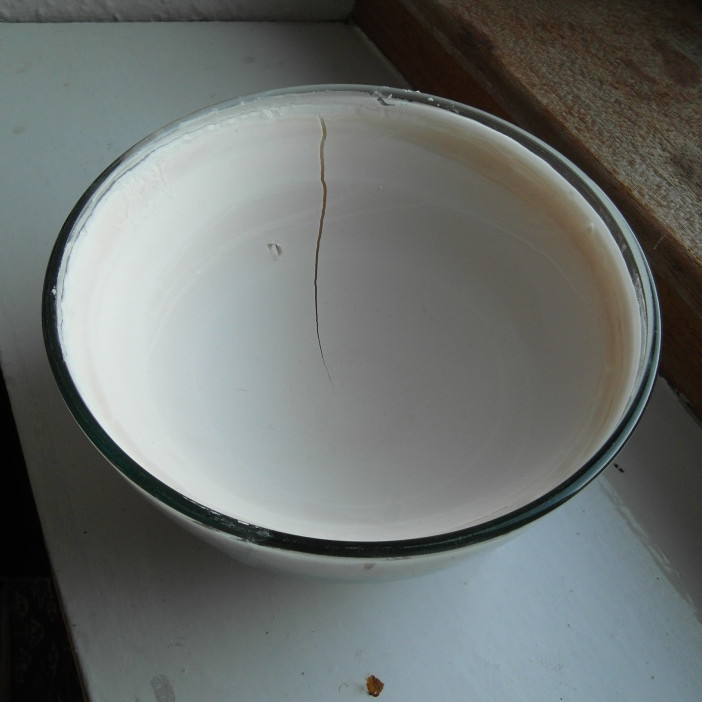When you stir a cup of tea, the surface of the rotating liquid develops a dip in the middle. The faster you stir, the deeper the dip. But the liquid surface is quite uneven; to get a smooth surface, throw the spoon away and spin the whole cup continuously. Once the liquid inside has caught up with the cup, and everything is turning at the same speed, the liquid surface forms a beautiful smooth curve known as a paraboloid of revolution.
Sarah McLeary and I are applying this idea to make thin paraboloidal plaster shells. We spin a bucket on a potter’s wheel (Sarah is a potter), and pour plaster into it. The plaster rapidly flows until its surface forms a deep paraboloidal curve, and then sets. We now use this cast, still spinning, as a mould, and cast a thin layer of plaster inside it, to make a paraboloidal shell.
That’s our first attempt above. It’s about 20 cm across and 3 mm thick. It might look like a part of a sphere, but in a profile view it’s easy to see that the curvature is tightest at the base and gradually decreases up the sides, as you’d expect for a paraboloid.
I love the fact that we didn’t decide what shape this shell was going to be: physics did.
There’s lots of experimentation ahead. When we’ve got the hang of it, I’ll explain our methods in more detail. But as this picture of our third attempt shows, we haven’t quite cracked it yet.

